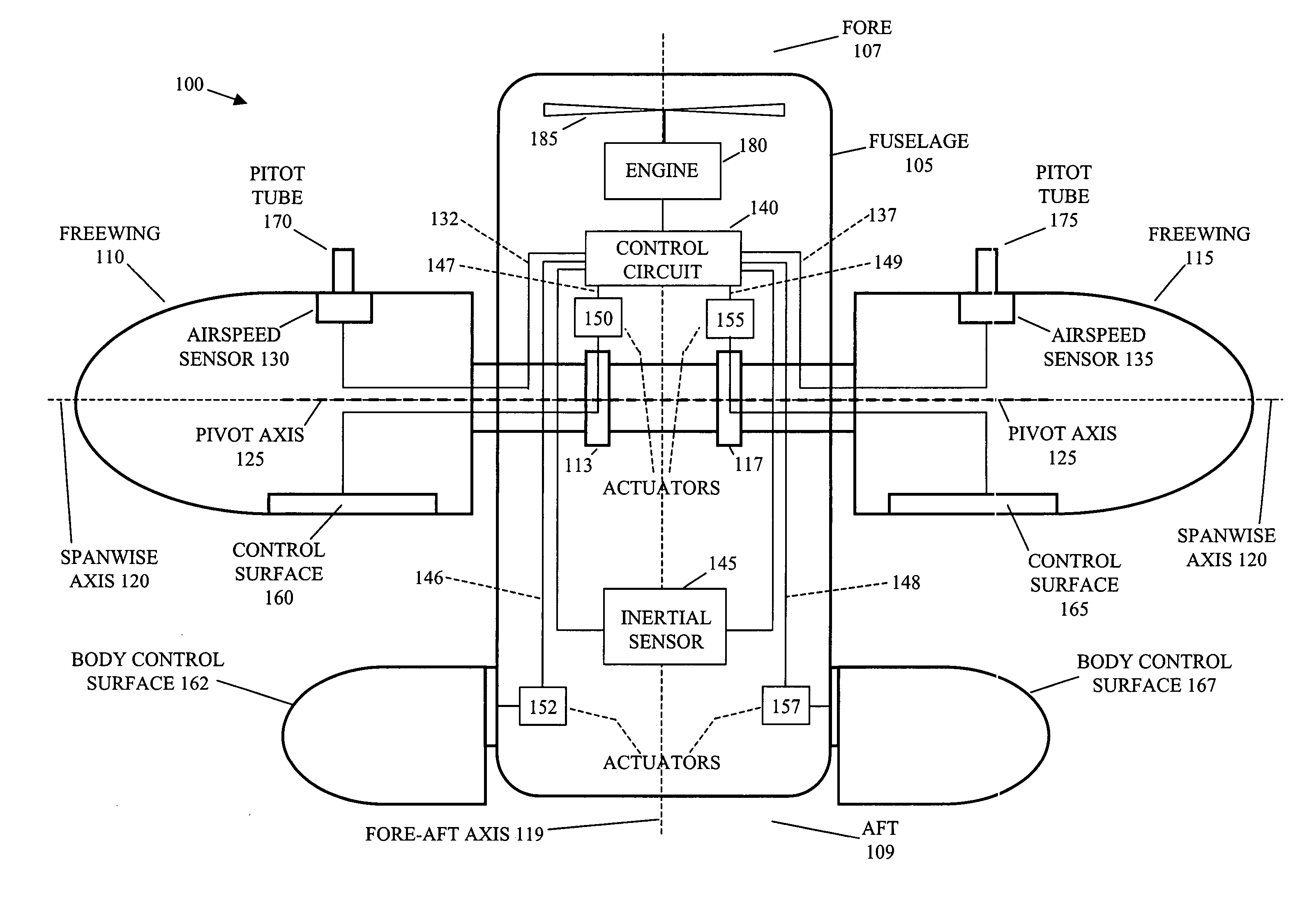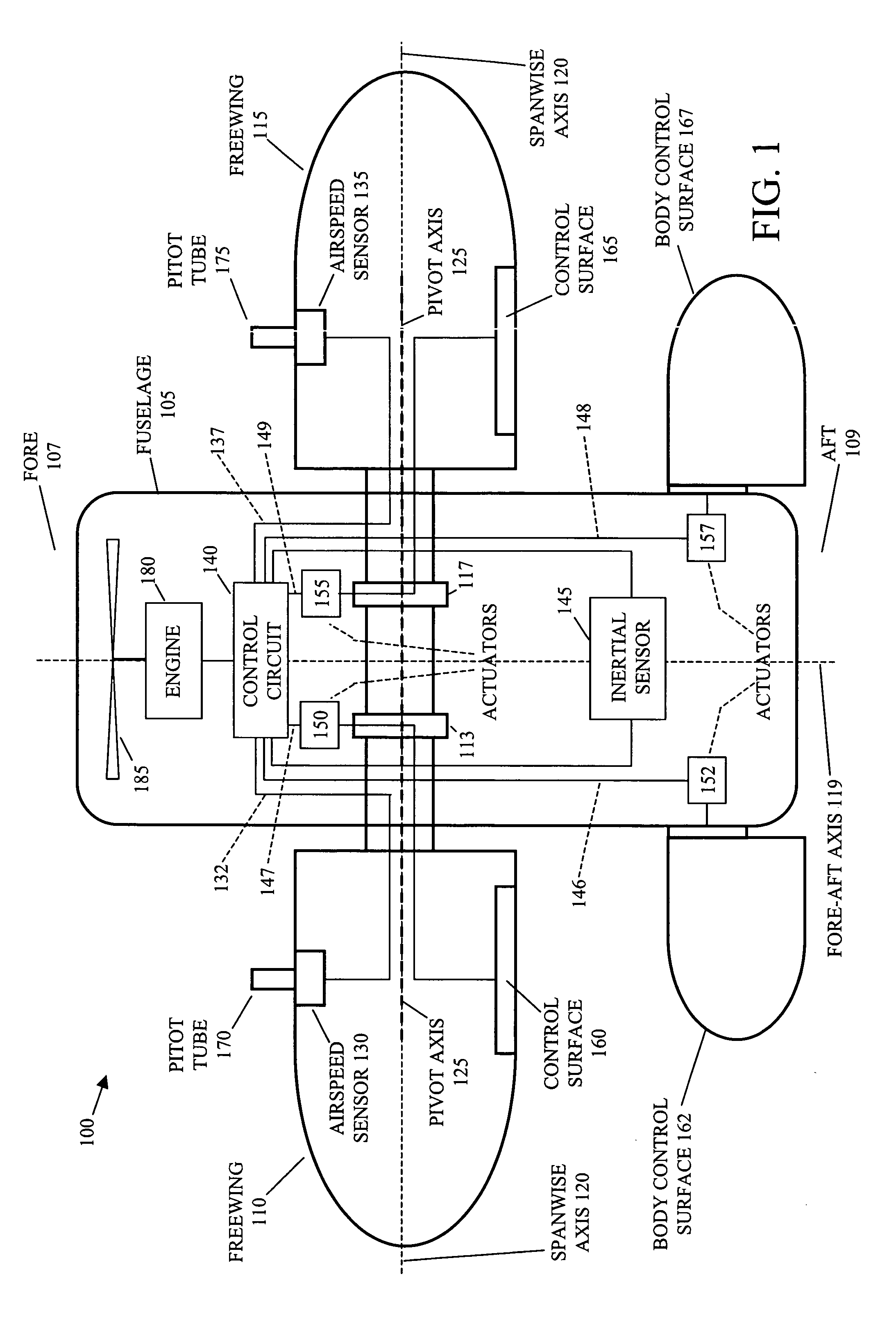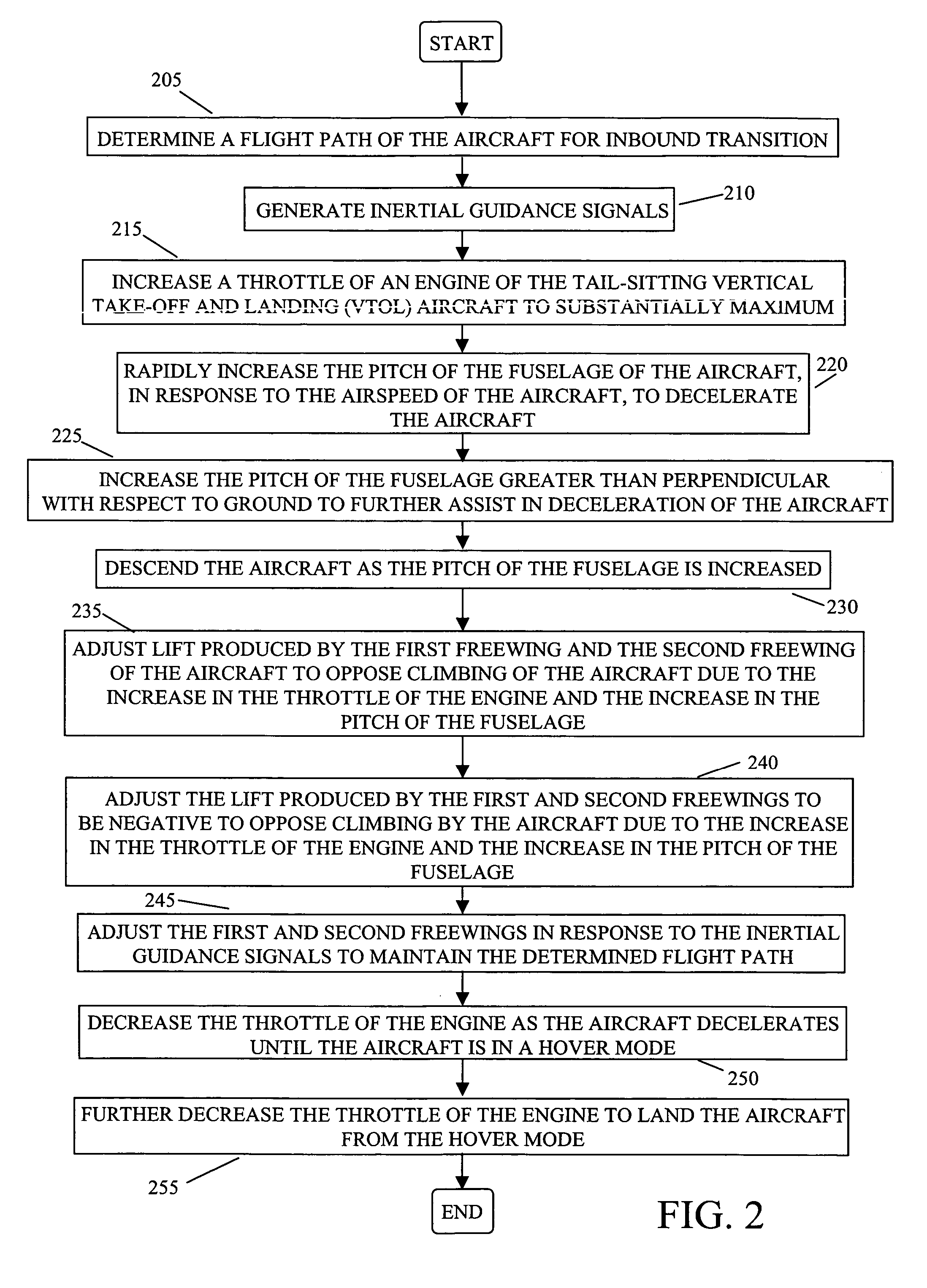Inbound transition control for a tail-sitting vertical take off and landing aircraft
a vertical take off and landing aircraft and inbound transition technology, applied in vehicle position/course/altitude control, process and machine control, instruments, etc., can solve the problems of vtol aircraft with ducted fan, sitter vtol, extremely difficult to hover, take off or land in gusty winds, etc., to increase the throttle of the engine, increase the pitch of the fuselage, and reduce the throttle
- Summary
- Abstract
- Description
- Claims
- Application Information
AI Technical Summary
Benefits of technology
Problems solved by technology
Method used
Image
Examples
Embodiment Construction
[0027] Exemplary embodiments of the present invention are directed to a system and method for inbound transition control for a tail-sitting vertical take-off and landing (VTOL) aircraft, such as, for example, a tail-sitting ducted fan VTOL aircraft that uses freewings, or the like.
[0028] To hover and / or land, a tail-sitting VTOL aircraft reorients its body from a substantially horizontal attitude in forward flight to a vertical attitude for hover and landing (both orientations being with respect to the ground or other landing surface). Such a pitch up maneuver can place critical demands on the control system. Additionally, there can also be a risk of “stalling” the propeller (e.g., in the case of an external rotor), or the inlet lip and fan rotor (e.g., in the case of a ducted fan). Given the thrust vectoring controls of the tail-sitting VTOL aircraft, there can be more control power available when the engine is at high throttle than when it is at reduced thrust. During the inbound...
PUM
 Login to View More
Login to View More Abstract
Description
Claims
Application Information
 Login to View More
Login to View More - R&D
- Intellectual Property
- Life Sciences
- Materials
- Tech Scout
- Unparalleled Data Quality
- Higher Quality Content
- 60% Fewer Hallucinations
Browse by: Latest US Patents, China's latest patents, Technical Efficacy Thesaurus, Application Domain, Technology Topic, Popular Technical Reports.
© 2025 PatSnap. All rights reserved.Legal|Privacy policy|Modern Slavery Act Transparency Statement|Sitemap|About US| Contact US: help@patsnap.com



